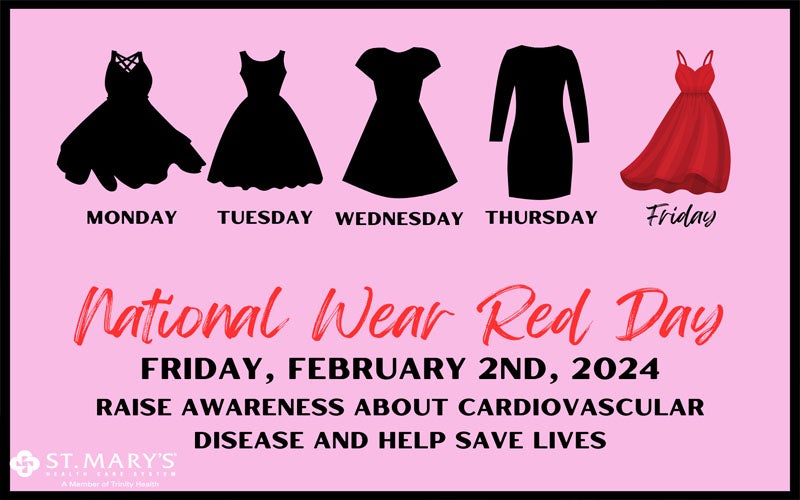National Wear Red Day Displays Power and Unity Surrounding Heart Disease
Every year, on the first Friday of February, a sea of red floods the streets, workplaces, and social media platforms. Why? It's National Wear Red Day – a day dedicated to raising awareness about heart disease and advocating for heart health.
The Importance of National Red Day
Our hearts are vital organs that work endlessly to pump blood – and life -- throughout our bodies. Unfortunately, if our hearts are not working properly, our lives can be disrupted. Heart disease includes a range of issues, from coronary artery disease to heart failure. The good news is that many heart-related problems (nearly 80%) can be prevented or managed through lifestyle choices and early detection.
National Wear Red Day is an opportunity to remind ourselves and others about the importance of maintaining a heart-healthy lifestyle. Simple actions such as maintaining a healthy blood pressure, staying physically active, limiting alcohol consumption, and avoiding smoking can significantly reduce the risk of heart disease. National Wear Red Day raises awareness about heart disease while also raising funds to support research and education.
Why is Wear Red Day Aimed Towards Women?
Heart disease affects both men and women, but historically there has been less awareness surrounding heart disease in women. In the early 2000’s, the American Heart Association (AHA) recognized that heart disease was being perceived as a “man’s” disease. While heart disease is slightly more common in men (1-in-4), it is the leading cause of death in both men and women in the United States. National Wear Red Day was initiated by the AHA as a part of their Go Red for Women campaign, which focuses on women’s heart health.
According to the Centers for Disease Control and Prevention, heart disease is responsible for about 1 in every 5 deaths in women, and only half (56%) of U.S. women recognize that it is their number one killer. This campaign is dedicated to making sure women around the nation know they are at risk and what actions to take to protect their heart health.
While National Wear Red Day focuses on women’s heart health, the overarching goal of this event is to raise awareness and funds for heart health for everyone, no matter their gender.
How Can I Be Involved?
Participating in National Wear Red Day is easy and impactful. Here are a few ways you can make an impact this February.
- Wear Red: Whether you’re wearing your favorite red dress, a red tie, or red socks, you can make a bold statement with your outfit, advocating for heart health.
- Post on Social Media: An easy way to be an advocate is to post images on social media with the hashtag, #WearRedDay. Additionally, you can post or share information about events, heart health, and more!
- Organize or Attend Events: Check for local events happening in your area, and if there are none, maybe you can be the change in your community and advocate for heart health near you!
- Donate: A big way to make a difference is to consider donating to organizations dedicated to heart health research and education. Every donation, no matter how big or small, makes a difference in the fight against heart disease.
National Wear Red Day is more than a day to wear a specific color. It's a powerful movement that unites individuals, communities, and organizations in the fight against heart disease. By wearing red and spreading awareness, we contribute to a collective effort to prioritize heart health and create a world where everyone can enjoy a longer, healthier life.
So, mark your calendar, pick out your favorite red attire, and join the movement on Friday, Feb. 2 – National Wear Red Day.
Sources: GoRedforWomen.org & The CDC [1] [2]
St. Mary’s provides exceptional cardiac care for all who need it, from prevention and early detection to emergency care, cardiac catheterization, device implantation, and ongoing follow-up. St. Mary’s Oconee Heart & Vascular Center provides compassionate and experienced cardiologists to maximize heart and blood vessel health, and primary care physicians across Northeast Georgia to help you know if and when specialist care is needed.
- Need a primary care provider?
- Learn more about St. Mary’s Oconee Heart & Vascular Center.
- Learn more about St. Mary’s cardiovascular services.

